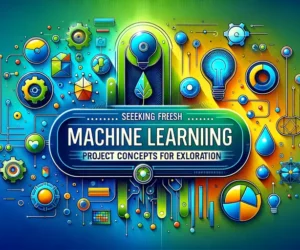
The Theory of Machine Learning: Harnessing Data's Power

Machine learning (ML) is revolutionizing the way we process and analyze data. By harnessing the power of data, ML enables us to make informed decisions and predictions. This comprehensive guide delves into the theory of ML, exploring the basics of algorithms, data collection, model selection, training, evaluation, deployment, and continuous improvement.
- Understand the Basics of Machine Learning Algorithms
- Collect and Clean Relevant Data for Training
- Choose the Appropriate Machine Learning Model for the Problem
- Train the Model Using the Collected Data
- Evaluate the Model's Performance Using Appropriate Metrics
- Fine-Tune the Model to Improve Its Performance
- Deploy the Trained Model in a Real-World Scenario
- Continuously Monitor and Update the Model as New Data Becomes Available
- Use the Power of Data to Make Informed Decisions and Predictions
Understand the Basics of Machine Learning Algorithms
Machine learning algorithms are the foundation of any ML system. Understanding these algorithms is crucial for selecting the right approach to solve specific problems.
Supervised Learning Algorithms
Supervised learning involves training a model on a labeled dataset, where the input-output pairs are known. This method is used for tasks such as classification and regression.
- Linear Regression: Predicts a continuous target variable based on linear relationships between input features.
- Logistic Regression: Used for binary classification problems, predicting the probability of a binary outcome.
- Decision Trees: Models that split the data into branches to make decisions based on feature values.
- Support Vector Machines (SVMs): Finds the hyperplane that best separates different classes in the data.
- Neural Networks: Composed of interconnected nodes (neurons) that can learn complex patterns in the data.
Unsupervised Learning Algorithms
Unsupervised learning deals with unlabeled data, aiming to discover hidden patterns or structures within the data.
Exploring Machine Learning Models with Multi-Output Support- K-Means Clustering: Partitions the data into K distinct clusters based on feature similarity.
- Hierarchical Clustering: Builds a tree of clusters, grouping data points based on their distance.
- Principal Component Analysis (PCA): Reduces the dimensionality of the data by transforming it into a set of orthogonal components.
- Anomaly Detection: Identifies data points that deviate significantly from the norm.
- Association Rules: Discovers interesting relationships between variables in large datasets.
Collect and Clean Relevant Data for Training
The quality of the data used for training significantly impacts the performance of ML models. Collecting relevant data and cleaning it to remove noise and inconsistencies is a critical step.
- Data Collection: Gather data from various sources, ensuring it is representative of the problem domain.
- Data Cleaning: Handle missing values, remove duplicates, and correct errors to ensure data quality.
- Feature Engineering: Create new features from existing data to improve model performance.
- Data Normalization: Scale features to a similar range to ensure fair comparison during training.
Choose the Appropriate Machine Learning Model for the Problem
Selecting the right ML model requires a thorough understanding of the problem, data characteristics, and model evaluation criteria.
Understand the Problem
Identify the specific problem you are trying to solve, whether it is classification, regression, clustering, or another type of ML task.
Consider the Size and Complexity of Your Data
Different models perform better with different data sizes and complexities. Simple models like linear regression may work well with small datasets, while complex models like deep neural networks are suited for large, intricate datasets.
Decoding Decision Trees: A Crucial Machine Learning AlgorithmEvaluate Model Performance
Use metrics such as accuracy, precision, recall, F1-score, mean squared error, and others to evaluate model performance. Select the model that balances bias and variance effectively.
Consider Interpretability
In some cases, model interpretability is crucial for understanding and trust. Models like decision trees and linear regression offer high interpretability, while neural networks are often seen as black boxes.
Take Advantage of Ensemble Methods
Ensemble methods combine multiple models to improve performance and robustness. Techniques like bagging, boosting, and stacking can enhance model accuracy and stability.
Train the Model Using the Collected Data
Training the model involves feeding the cleaned and processed data into the chosen ML algorithm. The model learns by adjusting its parameters to minimize the error between its predictions and the actual outcomes.
Determining Whether it's Software or Hardware-Based- Training Process: Split the data into training and validation sets. Use the training set to train the model and the validation set to tune hyperparameters and prevent overfitting.
- Optimization: Use optimization techniques like gradient descent to find the best model parameters.
- Hyperparameter Tuning: Adjust hyperparameters using methods like grid search or random search to find the optimal settings for the model.
Evaluate the Model's Performance Using Appropriate Metrics
After training, evaluate the model's performance on a separate test set to ensure it generalizes well to unseen data.
- Confusion Matrix: Provides a summary of prediction results for classification models, highlighting true positives, false positives, true negatives, and false negatives.
- ROC Curve: Plots the true positive rate against the false positive rate, helping assess the trade-off between sensitivity and specificity.
- Cross-Validation: Use techniques like k-fold cross-validation to assess the model's performance across different subsets of the data.
Fine-Tune the Model to Improve Its Performance
Fine-tuning involves making adjustments to the model and its training process to enhance performance.
- Regularization: Techniques like L1 and L2 regularization help prevent overfitting by penalizing large coefficients.
- Data Augmentation: Increase the diversity of the training data by applying transformations such as rotation, scaling, and cropping.
- Early Stopping: Stop training when the model's performance on the validation set starts to deteriorate, preventing overfitting.
Deploy the Trained Model in a Real-World Scenario
Deployment involves integrating the trained model into a production environment where it can make predictions on new data.
Choose the Deployment Environment
Select an environment that supports the model's requirements, such as cloud platforms, on-premises servers, or edge devices.
Exploring Machine Learning Models: Data AnalysisPreprocess Data in Real-Time
Implement real-time data preprocessing to ensure the input data is in the correct format and scale before feeding it into the model.
Monitor Model Performance
Continuously monitor the model's performance in the production environment to detect any degradation over time.
Implement Feedback Loop
Set up a feedback loop to collect new data and use it to update the model, ensuring it remains accurate and relevant.
Ensure Scalability and Reliability
Design the deployment infrastructure to handle increasing data volumes and maintain reliability under various conditions.
IBM's Approach to Normalization in Machine LearningContinuously Monitor and Update the Model as New Data Becomes Available
ML models need to be regularly updated with new data to maintain their performance and relevance.
- Data Drift Detection: Monitor for changes in the input data distribution that could affect model performance.
- Periodic Retraining: Retrain the model periodically with new data to incorporate the latest patterns and trends.
- Model Versioning: Maintain different versions of the model to track changes and improvements over time.
Use the Power of Data to Make Informed Decisions and Predictions
The ultimate goal of ML is to leverage data to drive better decisions and predictions. Understanding the fundamentals and applications of ML can help organizations harness its full potential.
Understanding the Fundamentals
A solid grasp of ML fundamentals, including algorithms, data preprocessing, and model evaluation, is essential for successful implementation.
The Types of Machine Learning Algorithms
Familiarize yourself with the various types of ML algorithms and their appropriate use cases, from supervised and unsupervised learning to reinforcement learning and deep learning.
Comparing the Effectiveness: Machine Learning vs. Neural NetworksApplications of Machine Learning
ML has a wide range of applications across industries, including healthcare, finance, marketing, and manufacturing. Recognizing these applications can help identify opportunities for ML integration.
The Future of Machine Learning
The future of ML is promising, with ongoing advancements in algorithms, computational power, and data availability. Staying informed about these trends can help organizations stay ahead in the rapidly evolving field of ML.
By leveraging the power of data, ML enables organizations to make informed decisions and drive innovation.
If you want to read more articles similar to The Theory of Machine Learning: Harnessing Data's Power, you can visit the Artificial Intelligence category.



You Must Read